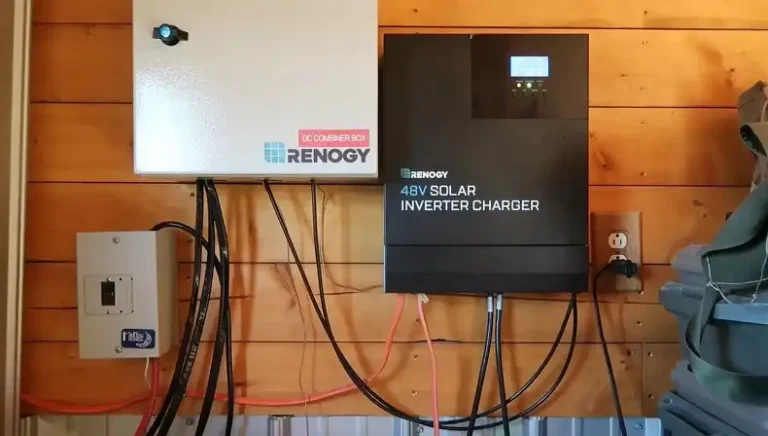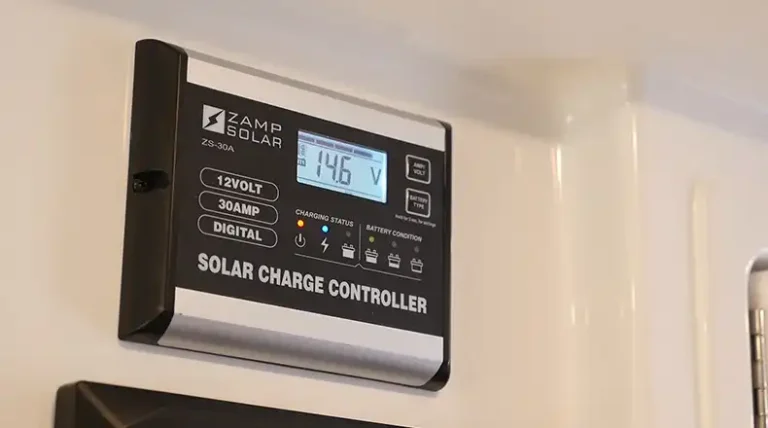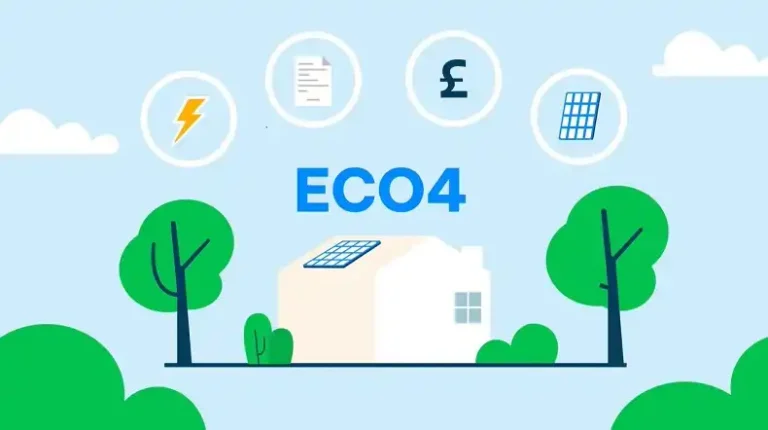AGM vs Gel Battery for Solar (What Differences I Found)
When building a solar power system, the battery bank is a critical component that can make or break your setup. You have two popular sealed lead-acid battery options suitable for solar storage – Absorbed Glass Mat (AGM) and gel. But how do you decide whether AGM or gel batteries are more suitable for your particular solar application?
While both AGM and gel batteries offer advantages like being maintenance-free and safe for indoor use, they differ in performance parameters that impact their suitability for various solar uses. By understanding the key differences between these two battery types, you can make an informed choice to power your off-grid solar system effectively.

What are the Differences Between AGM and GEL Solar Battery?
While AGM and gel batteries fall under the broader category of VRLA (Valve Regulated Lead Acid) batteries, their internal construction and chemistry differ leading to performance variations. Let’s look at some of the main parameters that set AGM and gel batteries apart:
Construction
The core construction difference between AGM and gel batteries lies in the electrolytes used:
- AGM – The electrolyte is suspended in thick fiberglass mats that absorb and immobilize it.
- Gel – The electrolyte contains silica gels that make it gel-like rather than liquid.
Due to the fiberglass absorption, AGM batteries tend to hold slightly more electrolyte than gel making them more tolerant to high current draws. The reinforced mats also make the AGM casing more puncture-resistant.
Gel batteries on the other hand have added silica to strengthen the bonds between electrolyte molecules. This reduces material shedding and helps the gel battery better withstand vibration or shocks during transport or operation.
Depth of discharge
Depth of discharge (DoD) indicates how much capacity you can repeatedly tap from the battery.
- AGM – AGMs offer a higher 50-80% DoD depending on the make. This allows you to use a larger portion of their rated capacity regularly without shortening their lifespan.
- Gel – Gel batteries should only be discharged to 50-60% DoD. Drawing more than this threshold rapidly ages the battery. The lower usable capacity necessitates buying larger gel batteries for the same energy needs.
The AGM’s higher permissible DoD makes better utilization of its capacity possible. For off-grid solar usage spanning days, this can be a key advantage over gel batteries.
Round-trip efficiency
Round-trip efficiency indicates the energy retained when charging and discharging the battery.
- AGM – AGM batteries have a slightly higher 80-95% round-trip efficiency owing to lower internal resistance. More of the PV energy fed into the battery can be retrieved for powering appliances.
- Gel – Gel batteries tend to have about 80% round-trip efficiency. The additional silica increases internal resistance and causes marginally higher energy losses.
While both battery types fare reasonably on roundtrip efficiency for solar systems, AGMs hold a small edge. This matters more in smaller off-grid systems where extracting maximal energy from your solar panels is key.
Cycle life
Cycle life is the number of discharge-recharge cycles the battery withstands before capacity falls by 80%. It is a measure of the batteryâ€TMs operational lifespan. AGMs and gels both offer good cycle lives extending into hundreds or the low thousands of cycles. But gel batteries tend to score higher on this metric:
- AGM – Typically in the range of 400-1500 cycles depending on depth of discharge levels. Quality AGMs can yield 70-80% of their original capacity for 7-10 years.
- Gel – You can expect anywhere between 600 to 3000 cycles from gel batteries before they wear out. High-end gels boast 12-20-year lifespans for solar usage. The slower charge acceptance is gentler, putting lesser strain on internal components.
If you seek a battery that potentially serves for over a decade without replacement, gel types are a durable option albeit costlier. For most remote off-grid scenarios, 7-10 years of AGM battery life is sufficient before a swap out.
Chemistry
Both AGM and gel batteries consist of lead and sulfuric acid compounds. However subtle differences arise in how the sulfuric acid electrolyte is prepared impacting performance.
- AGM – For AGM batteries, the electrolyte mixture is made from battery-grade diluted sulfuric acid to reach the desired density. This allows for some variation between brands.
- Gel – In gel variants, concentrated sulfuric acid is first mixed with fumed silicon which causes it to gel. Battery-grade water is then added to the gel to get optimal liquid content. This closely supervised process leads to more standardized electrolyte properties.
The exacting chemistry control aids gel batteries to have consistent characteristics across different manufacturers. For utilities seeking uniformly behaving replacements years later without redesigning systems, gel batteries offer an advantage.
Recharge rate
Recharge rate dictates how rapidly the battery can absorb charge from solar panels or AC sources:
- AGM – Faster recharge is a strong suit for AGM batteries. Most models can safely accept 15-20% of their capacity as charging current without sustaining damage or shortening their lifespan. This allows rapid solar recharging when sunshine is abundant.
- Gel – Gel batteries require a slower recharge rate capped at 10-15% of rated capacity. Charging them too rapidly can overheat cells causing irreparable damage. This makes them less suitable for off-grid systems dependent on intermittent solar insolation.
AGM’s higher tolerance of fast charging gives them flexibility in off-grid solar applications. You can collect more energy during sunny hours and store it for overnight usage. Gel batteries in turn need specialized charge controllers to strictly regulate input current avoiding injury.
Temperature Resistance
Temperature resistance is a key performance differentiator:
- AGM – Most AGM variants see noticeable capacity drops as the temperature falls below 77°F (25°C). In winters or cold regions, their usable capacity shrinks unless kept actively heated.
- Gel – Gel batteries are inherently more resilient to temperature extremes. They can operate at up to 104°F (40°C) or endure freezing conditions without notable performance penalties. Outdoor deployment is possible within a broader -4°F to 104°F (-20°C to 40°C) envelope.
Gel batteries owe their cold tolerance to the added silica that alters electrolyte viscosity. For off-grid solar systems facing extreme weather, gel batteries offer natural temperature hardening letting you leave them outside year-round. AGMs however necessitate temperature moderation.
Advantages and Disadvantages of AGM and GEL Solar Battery
Let’s quickly summarize the benefits and downsides of each type to simplify decision-making:
AGM Solar Battery
Advantages
- Higher depth of discharge improves capacity utilization
- Slightly better roundtrip efficiency
- Rapid recharge rate from solar panels
- Lower upfront cost per watt-hour
- Reinforced plates handle vibrations well
Disadvantages
- Shorter cycle life expectancy than gel
- Lose capacity faster in cold environments
- Needs protection from overcharging
Gel Solar Battery
Advantages
- Long 20+ year service life potential
- Consistent performance across production batches
- No gassing so can be used in living areas
- Tolerant to temperature extremes
- Resilient to vibrations and shocks
Disadvantages
- Very slow recharge rate
- Lower permissible depth of discharge
- Shortened life if fast-charged
- Much more expensive upfront
With awareness of these tradeoffs, matching a battery type to your solar objectives becomes easier.
Which One is Ideal for Your Solar System?
So when does it make sense to prefer gel or AGM batteries for your specific solar setup?
Here are some recommendations:
Gel batteries work better for:
Critical infrastructure demanding ultra-long runtime – Telecom towers, emergency response systems, hospitals, etc. need power 24×7 for 15-20 years. batteries’ sustained longevity and resilience make them a prudent fit despite higher prices.
Deep cycle house loads – For 100% solar-powered homes relying on battery banks nightly for lights, appliances, etc. batteries’ lengthy lifespan offsets costs. Their tolerance to deep cycling preserves longevity.
Large grid-tied solar fields – Big multi-megawatt solar farms feeding the utility grid opt for gel over AGM thanks to longevity, chemistry consistency, and extreme weather resistance. The higher cost gets negated by heavy usage spread over their 20-year lifespan.
Marine or recreational vehicles – Vibrations are inescapable on ships and RVs. Gel batteries can handle such shake, rattle, and roll that prematurely wear out AGMs. Their capacity holds steadier between winter and summer for reliable performance.
AGM batteries fit better in:
DIY or hobbyist small-scale solar – For folks experimenting with solar power as a backyard hobby, AGMs provide an affordable entry point before potentially scaling up. Replacing them every 5-7 years is an acceptable tradeoff.
Hybrid inverter systems – Homes using batteries alongside the grid appreciate AGM benefits like rapid solar recharging. Frequent shallow cycling preserves longevity while the grid picks up the slack when solar falters.
Portable off-grid power boxes – For RV and camping solar kits meant for intermittent use, the batteries’ size and weight matter. AGMs strike a good balance between price, performance, and mobility.
Infrequently used seasonal outposts – At lake homes or hunting cabins accessed a few weeks yearly, the battery’s lengthy lifespan gets underutilized. AGMs make financial sense despite swapping them out every several years.
Solar-charged electric gates, signaling – Outdoor infrastructure relying on solar tends to choose AGMs for their higher temperature resilience over the gel. Periodic battery replacement every 5-7 years is anticipated.
Buying Tips for AGM and GEL Solar Batteries
Here are some handy purchasing considerations when investing in either gel or AGM batteries:
Check solar charger compatibility
- Gel batteries demand strict voltage regulation during charging thanks to low tolerance of over-voltage or fast charging. Not all basic solar controllers offer these safeguards.
- AGMs allow fast charging so can work with standard PWM solar controllers. But for fully optimized battery life, MPPT solar charge controllers are recommended.
Select reputed established brands
- For both gel and AGM types, opt for leading manufacturers like Trojan, Crown, and Surrette/Rolls that adhere to rigorous QC standards for long-term reliability.
Get the right battery capacity
- When sizing batteries, choose at least 3 days of autonomy for off-grid solar. Gel types need 1.3 times more capacity vs AGMs for equivalent load support owing to lower DoD.
Seek out technical support
- Battery problems can get tricky. Seek brands providing accessible technical guidance to resolve glitches promptly.
Acquire all batteries in one go
- Don’t mix and match new/old batteries of the same type. Variable aging leads to system issues. Size your full bank needs upfront for seamless integration.
Insist on safety mechanisms
- Gel and AGM batteries are generally safe if charging guidelines are followed. But for installations near living spaces, additionally insist on fail-safe measures like automatic shutdown on overcharge/overheat.
Consider recycling programs
- Both gel and AGM batteries have high lead content. When their lifespan ends, ensure responsible recycling through buyback/exchange instead of hazardous waste dumping.
Weigh maintenance needs
- Gel and AGM batteries are marketed as ‘maintenance-free’ compared to flooded lead-acid alternatives. But you still need to routinely check battery parameters like terminal corrosion, hold-down integrity, and wiring faults. AGMs and gels just don’t need manual topping off of water.
Conclusion
Determining whether to choose AGM vs gel batteries for your solar system depends greatly on your usage. Gel batteries justify their steep price through incredibly durable lifespans exceeding 15-20 years. But for moderate capacity off-grid solar setups on a budget, AGMs provide an affordable and reliable 5-7-year solution before replacement.
Use this discussion of the intrinsic technology differences between these two battery types to make the appropriate selection. Size them right and integrate them with suitable solar charge controllers for efficiency. By following prudent installation and maintenance guidelines, you can extract the full rated capacity reliably throughout their operational lifetime. Investing in quality gel or AGM batteries ensures persistent solar energy availability whenever sunshine wanes.






